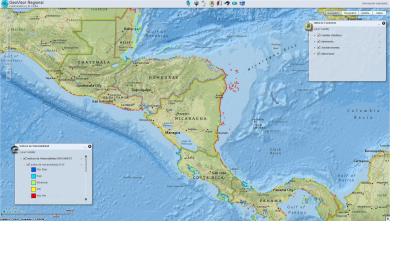UN-SPIDER's Regional Support Office CATHALAC – The Water Center for the Humid Tropics of Latin America and the Caribbean –, elaborated a profile of the relative vulnerability of Central America's Caribbean and Pacific coasts to the hazards of storm-induced coastal erosion and storm surge. The analysis included the seven Central American countries (i.e. Belize, Guatemala, El Salvador, Honduras, Nicaragua, Costa Rica, and Panama) and was done to provide a reference level for decision-making regarding coastal planning.
Utilizing powerful computer models embedded in geographic information systems (GIS) to examine such vulnerability along the region's approximately 15,000 km of coastline, the study addressed two main questions:
- Which parts of Central America's coasts are most vulnerable to storm-induced coastal erosion and storm surge?
- How do coastal / marine ecosystems such as mangrove forests and coral reefs affect coastal vulnerability?
The study was done by applying a novel modeling toolset developed by Stanford University in the context of their ongoing Natural Capital project which seeks to quantify the ecosystem services provided by different natural habitats. That toolset, the Integrated Valuation of Environmental Services and Tradeoffs (InVEST), includes a Coastal Vulnerability model which allows for qualitatively assessing exposure to storm-induced coastal erosion and storm surge by taking into consideration a range of criteria, including geomorphology, topographic relief, natural habitats, projected sea level rise, wave and wind exposure, and surge potential.

